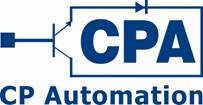Industrial component specialist, CP Automation, has made available for download a new whitepaper that addresses a lack of industry awareness of different methods of harmonic mitigation. It is designed to educate engineers on the most appropriate solutions to mitigate the damage caused by harmonic currents and utility level voltage distortion.
 Authored by Jonas Persson, product manager at Comsys AB, the paper highlights the challenges facing original equipment manufacturers (OEMs) in tackling the growing problem of harmonic currents. For many years this has held the industry back; the fact that engineers struggle to identify the best solutions for their needs due to a lack of information. The overall context is to reduce harmonic loading in a drive system.
Authored by Jonas Persson, product manager at Comsys AB, the paper highlights the challenges facing original equipment manufacturers (OEMs) in tackling the growing problem of harmonic currents. For many years this has held the industry back; the fact that engineers struggle to identify the best solutions for their needs due to a lack of information. The overall context is to reduce harmonic loading in a drive system.
The whitepaper details the four main mitigation techniques and their associated technologies. Covering series passive, series active, shunt passive and shunt active solutions, it presents in-depth case studies of real life implementations of each as well as theoretical worked examples explaining the benefits and drawbacks.
Knowing the different types of mitigation technique to employ is essential. There are three variations of the series-passive solution alone, line reactors, series harmonic filters and multi-phase, each with their own strengths and weaknesses. Choosing one over another is a decision that must be made from an informed perspective.
“Without both breadth and depth of knowledge, it is possible that the most efficient method of harmonic mitigation is being overlooked,” says John Mitchell, business development manager at CP Automation. “On top of that, there are numerous other challenges faced by engineers caused by the rise of non-linear loads, such as extra stresses on outdated equipment.”
“We hope this whitepaper will go some way to addressing the lack of information issue, which in turn will go some way to reducing the amount of harmonics related problems the wider engineering community encounters in electrical industry applications.”
To download the new whitepaper on mitigating harmonic currents, visit http://goo.gl/ikulpI

 Authored by Jonas Persson, product manager at Comsys AB, the paper highlights the challenges facing original equipment manufacturers (OEMs) in tackling the growing problem of harmonic currents. For many years this has held the industry back; the fact that engineers struggle to identify the best solutions for their needs due to a lack of information. The overall context is to reduce harmonic loading in a drive system.
Authored by Jonas Persson, product manager at Comsys AB, the paper highlights the challenges facing original equipment manufacturers (OEMs) in tackling the growing problem of harmonic currents. For many years this has held the industry back; the fact that engineers struggle to identify the best solutions for their needs due to a lack of information. The overall context is to reduce harmonic loading in a drive system.The whitepaper details the four main mitigation techniques and their associated technologies. Covering series passive, series active, shunt passive and shunt active solutions, it presents in-depth case studies of real life implementations of each as well as theoretical worked examples explaining the benefits and drawbacks.
Knowing the different types of mitigation technique to employ is essential. There are three variations of the series-passive solution alone, line reactors, series harmonic filters and multi-phase, each with their own strengths and weaknesses. Choosing one over another is a decision that must be made from an informed perspective.
“Without both breadth and depth of knowledge, it is possible that the most efficient method of harmonic mitigation is being overlooked,” says John Mitchell, business development manager at CP Automation. “On top of that, there are numerous other challenges faced by engineers caused by the rise of non-linear loads, such as extra stresses on outdated equipment.”
“We hope this whitepaper will go some way to addressing the lack of information issue, which in turn will go some way to reducing the amount of harmonics related problems the wider engineering community encounters in electrical industry applications.”
To download the new whitepaper on mitigating harmonic currents, visit http://goo.gl/ikulpI



No comments:
Post a Comment